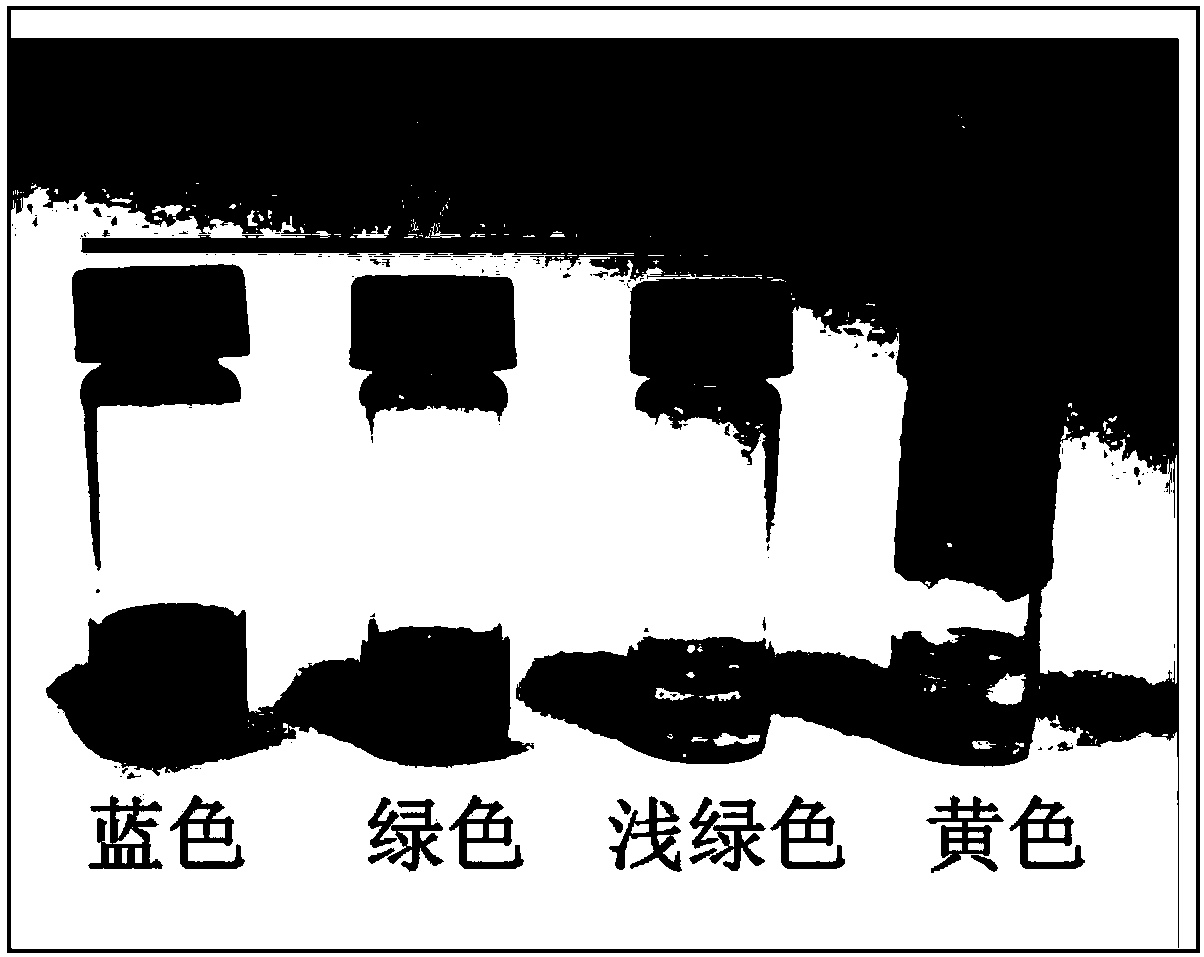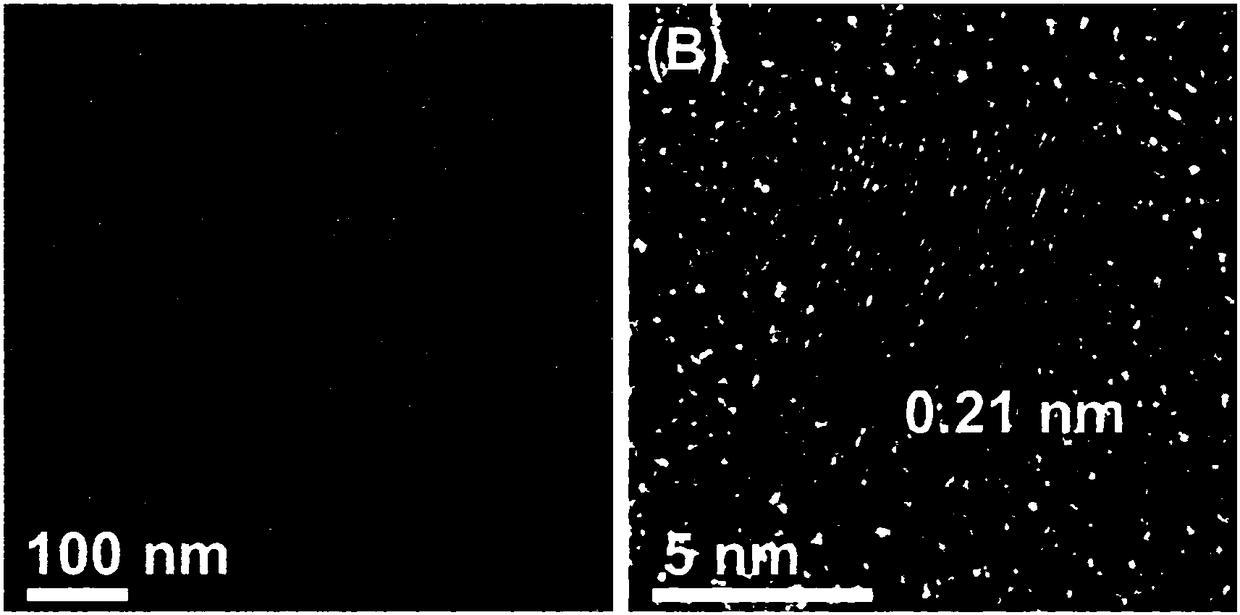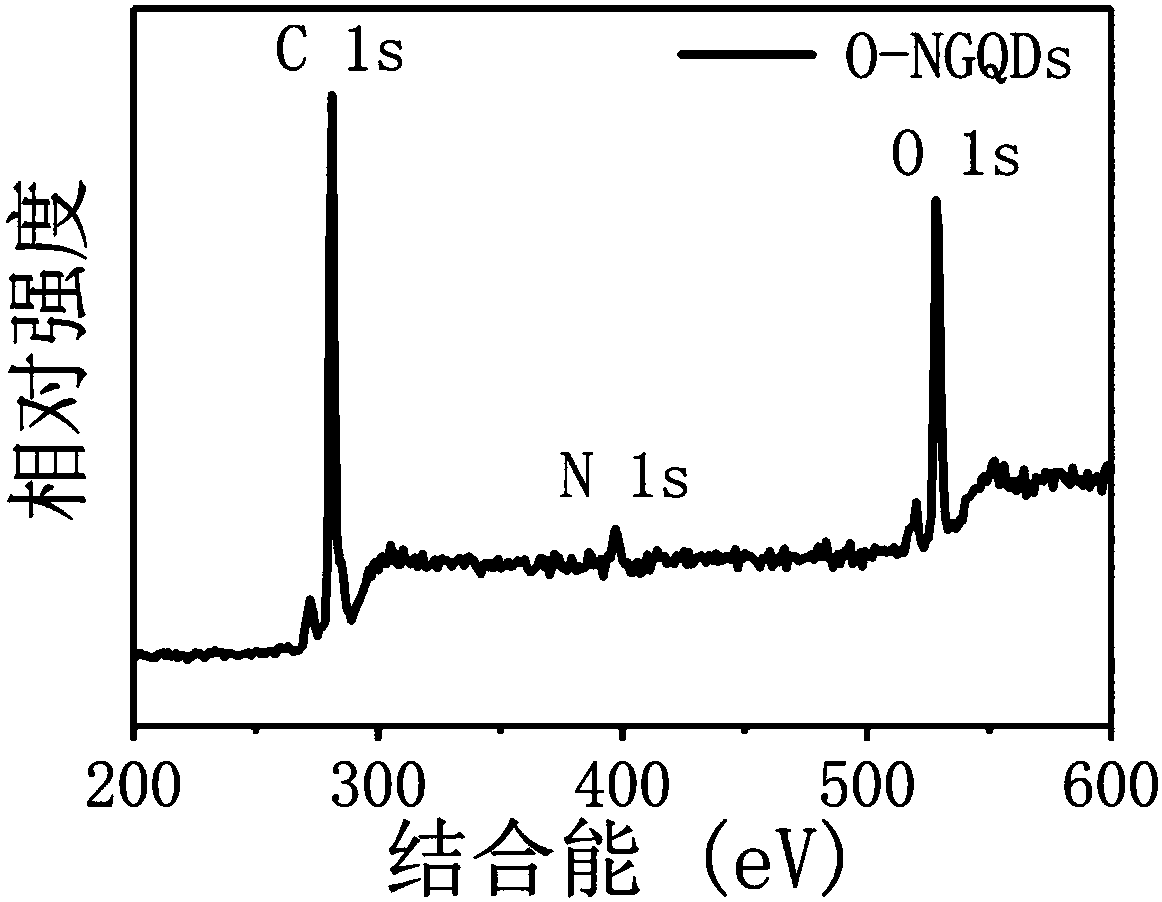Nitrogen-oxide-doped carbon dot fluorescence probe for formaldehyde detection and preparation method of fluorescence probe
A technology of nitrogen-doped carbon dots and carbon dot fluorescence, applied in the field of detection, can solve the problems of complex detection methods and high cost of formaldehyde, and achieve the effects of low detection limit, convenient storage, and good water solubility
- Summary
- Abstract
- Description
- Claims
- Application Information
AI Technical Summary
Problems solved by technology
Method used
Image
Examples
Embodiment 1
[0027] Example 1 Preparation of nitrogen oxide doped carbon dots
[0028] (1) Add 2.68g of citric acid monohydrate and 3.44g of urea into 40ml of deionized water, mix and stir to obtain a transparent solution;
[0029] (2) Transfer the solution in step (1) to a 50mL reactor, and react at 180°C for 12 hours to obtain a yellow nitrogen-doped carbon dot solution;
[0030] (3) Put the yellow solution in step (2) in an open beaker and stir for 2 days, and oxidize to obtain a blue nitrogen-doped carbon dot solution. Among them, with the extension of the oxidation time, the solution gradually changes from yellow to green, and finally appears blue, such as figure 1 Shown.
[0031] (4) Add ethanol to the oxidation solution in step (3), centrifuge to precipitate, repeatedly wash the precipitate with ethanol, and centrifuge to obtain a blue precipitate;
[0032] (5) Place the precipitate in step (4) in a blast drying oven for 0.5 hours, heating at 80°C to obtain a blue solid powder, which is wate...
Embodiment 2
[0036] Example 2 Performance analysis of nitrogen oxide-doped carbon dots for detecting formaldehyde
[0037] (1) Prepare 15 mL of a nitrogen oxide-doped carbon dot solution with a concentration of 0.01 mg / mL, select an excitation wavelength of 360 nm, and measure its fluorescence as a blank contrast value. Under vacuum sealing conditions, formaldehyde is injected into the solution, and the concentration of formaldehyde in the solution ranges from 0 to 300 μM. Select the excitation wavelength as 360nm, and measure the corresponding fluorescence record data;
[0038] (2) Repeat the experiment several times, draw the curve of the decrease of the fluorescence intensity of the carbon dot solution as the concentration of formaldehyde increases, and select the linear part for fitting to obtain the fitting equation I = −0.29 × C formaldehyde + 22.67 (R 2 = 0.99), the lowest detection limit is 4.5ppb, such as Image 6 Shown.
Embodiment 3
[0039] Example 3 Nitrogen oxide doped carbon dots are used for the detection of low-concentration formaldehyde
[0040] (1) Add a certain amount of formaldehyde to 15 mL of a nitrogen oxide doped carbon dot solution with a concentration of 0.01 mg / mL, so that the concentration of formaldehyde in the solution is 10 μmol / L. The excitation wavelength is selected as 360nm, and the fluorescence intensity of the measured solution drops to 19.66;
[0041] (2) Bring the fluorescence intensity value measured in step (1) into the fitting equation, and calculate the concentration of formaldehyde to be detected to be approximately 10.38 μmol / L;
[0042] (3) By analogy, add a certain amount of formaldehyde to 15mL of a nitrogen oxide doped carbon dot solution with a concentration of 0.01mg / mL, so that the concentration of formaldehyde in the solution is 15μmol / L, 20μmol / L, 30μmol / L and 40μmol / L. The excitation wavelength is selected as 360nm, and the measured fluorescence intensity drops to 18...
PUM
| Property | Measurement | Unit |
|---|---|---|
| particle size | aaaaa | aaaaa |
Abstract
Description
Claims
Application Information
 Login to View More
Login to View More - R&D
- Intellectual Property
- Life Sciences
- Materials
- Tech Scout
- Unparalleled Data Quality
- Higher Quality Content
- 60% Fewer Hallucinations
Browse by: Latest US Patents, China's latest patents, Technical Efficacy Thesaurus, Application Domain, Technology Topic, Popular Technical Reports.
© 2025 PatSnap. All rights reserved.Legal|Privacy policy|Modern Slavery Act Transparency Statement|Sitemap|About US| Contact US: help@patsnap.com



